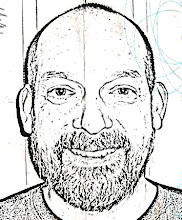
During a recent trip to Trieste, Italy, instead of staying in my usual hotel, a self-styled "grand hotel," but really just a faded, traditional old hotel, I inexplicably opted to try something different. Bad idea.
While my usual hotel may be a little worn down and the service sometimes erratic, it definitely possesses a degree of charm. I have become accustomed to it and they make me feel comfortable, which is why I continue to stay there.
To say the least, the new hotel is different. They created it by renovating an old stone building, so it does retain a little bit of character, but the designers have tried really hard to make the place "hip" and "urban." Now, this works in places like South Beach and Soho, but it doesn't quite make it in Trieste, which, let's face it, remains a bit of a backwater.
For starters, they have eliminated the traditional front desk, replacing it with a table in the middle of the lobby with a couple of laptop computers. I'm not sure why this set-up has become so popular in these types of hotels but I'm seeing it more and more, not only in hotels like this, but in more traditional ones as well.

The most defining feature, however, is overwhelming whiteness. Whitewashed walls stand unadorned by decoration, both in the lobby and in the rooms. A white bedspread covers white sheets on a white bed flanked by white tables. And don't forget the white fluorescent lights.
The resulting effect resembles more a hospital operating room than a hotel room. I feared I would wake up missing a kidney, the surgical staff having come round during the night and removed it.
Next time, I'm back to the old standby, thank you. Boring, I know, but at least I will sleep.



 Unfortunately, the Prince of Darkness' black magic had no ill effect on Spurs: they won 2-1 in extra time. Maybe we need Boris Karloff on the staff as well.
Unfortunately, the Prince of Darkness' black magic had no ill effect on Spurs: they won 2-1 in extra time. Maybe we need Boris Karloff on the staff as well.


















